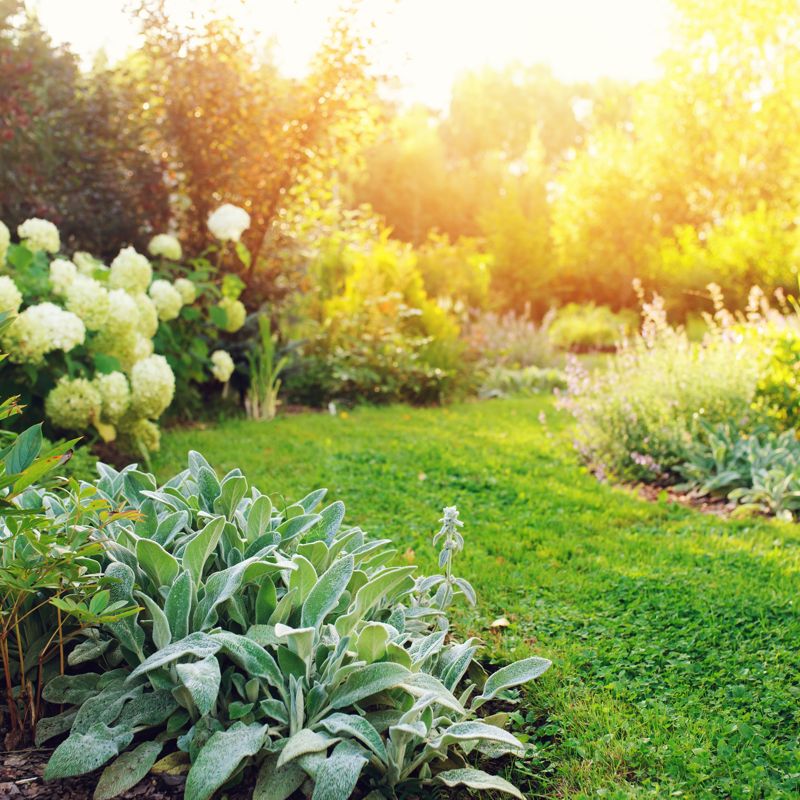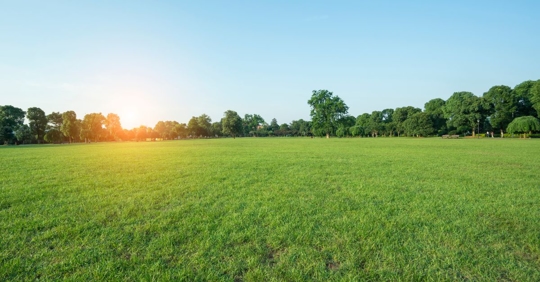Understanding Heatwave Stress on Trees
Physiological Impact on Trees:
Heatwaves can be cruel deities to our landscape, affecting trees in ways that are both visible and hidden deep within their biological systems. At the core of a tree's plight during extreme heat lies the disruption of photosynthesis. When temperatures soar, the delicate balance of carbon fixation is thrown off, leading trees to shut down this vital process to conserve moisture, ultimately compromising their food production. The stress doesn't stop there; respiration rates ramp up, demanding more energy from a nutrient-starved system. Cellular damage ensues, akin to a computer overheating and crashing. Tissue necrosis can occur, setting off a cascade of issues that endanger the very life of our trees.
Symptoms and Signs of Heat Stress:
Observing the outward signs of heat stress allows us to become tree whisperers, diagnosing their ailments with a keen eye. If you notice wilting leaves hanging forlornly, browning tips gradually overtaking vibrant greens, or leaf scorch making tattered emblems of your foliage, heat stress is the likely culprit. Heat-stressed trees often engage in premature leaf drop, as though shedding extraneous parts to focus resources on survival. Piece these signs together, and we can step in to help mitigate the damage before it becomes irreversible.
Impact on Tree Growth and Health:
Prolonged heatwave conditions are not just a temporary setback; they have lasting effects on tree growth and overall health. Height and girth may stall, caught in a struggle to balance survival and development. Nutrient absorption comes to a standstill when a tree faces dehydration and heat stress, leaving it susceptible to deficiencies. Furthermore, long-term exposure means altering a tree's ability to ward off diseases and pests, thus making heatwaves a recurring nemesis. Understanding these impacts helps us pivot from mere reaction to proactive care strategies, ensuring our trees thrive in the face of adversity.
Types of Trees More Vulnerable to Heatwaves
Species Susceptibility:
Some trees are more inclined to falter when the mercury climbs, driven by the genetic makeup and the ecosystems they originate from. Species accustomed to cooler climates often struggle in the intense heat of summer, while shallow-rooted varieties have limited access to the life-giving reservoirs deep within the soil. It's this genetic and structural predisposition that puts certain trees at a disadvantage during heatwaves, causing them to suffer more intensely than others. Knowing which species are apt to be vulnerable guides us in our planting decisions, nudging us toward alternatives that can better withstand the rigors of sun-baked summers.
Age and Maturity Factors:
The age-old wisdom applies to trees: with age often comes resilience. Mature trees, firmly entrenched in their environments, generally boast deeper root systems, larger canopies, and a greater reserve of resources to combat extreme heat. Compare this to the tender age of saplings and newly planted trees, whose fragile existence is easily disturbed by the unforgiving summer rays. Understanding the vulnerability attached to youth allows us to tailor our care practices accordingly, ensuring protective measures are taken to bolster the survival odds of these fledgling flora.
Environmental and Soil Conditions:
Beyond the tree itself, external factors play a crucial role in determining a tree's response to heat stress. The urban environment often exacerbates the problem, with concrete and asphalt absorbing and then radiating heat, creating simmering microclimates that intensify a tree's struggle. Soil quality is another key player; poor soil conditions impair moisture retention, leaving trees thirsting in the midst of an inferno. Focus on improving urban plots and agricultural landscapes, rich with organic matter and intelligently crafted drainage, to combat heatwave exacerbation and aid our arboreal friends.
Strategies for Protecting Trees During Heatwaves
Proper Watering Techniques:
Water conservation is not just about saving resources; it's about using those resources wisely. During a heatwave, trees need deep watering at optimal times, allowing water to penetrate deeply, reaching their roots where it's needed most. Early mornings or late evenings are optimal times—when the air is cooler, and the sun's fiery tongue is less likely to steal moisture from the surface before it can soak in. With effective irrigation techniques, we make sure every drop counts, thereby sustaining tree health through drought-like conditions.
Mulching Benefits:
A simple mulch can transform a tree's battle against heat; acting like a thermal blanket, it helps regulate the temperature surrounding the roots and keeps precious moisture close at hand. Mulching materials, like wood chips, straw, or even gravel, shield the base of the tree from temperature extremes. Applied appropriately, mulches provide insulation, and lend themselves to creating an environment conducive to thriving roots that can better withstand scorching heats. With every sprinkle of mulch, we arm our trees against the harsh temperatures.
Shading and Physical Barriers:
Finding ingenious ways to shade trees can dramatically alleviate heat stress, especially for young and vulnerable varieties. Shade cloths, strategically placed structures, or adjacent taller plants provide respite from direct sunlight, leading to cooler leaf temperatures and safeguarding against sunburn. Physical barriers, such as fencing or innovative urban arrangements, can further lessen the exposure to extreme elements. As urban landscapes expand, being creative with placement and design ensures our greenery stands tall even when the sun unleashes its full power.
Long-Term Solutions for Climate Resilience
Selecting Heat-Resilient Tree Species:
Strategically picking tree species that are naturally acclimatized to enduring harsh temperatures is a vision for sustainable urban forestry. Trees like oak, pistache, or drought-resistant pines can become staples in planned landscaping. Such planning ensures not just survival, but growth and expansion of urban greenery even amid accelerating climate variations. This forward-thinking approach by urban planners and homeowners alike builds resilience into our shared ecosystem.
Improving Soil Health and Fertility:
Good soil health is non-negotiable for long-term tree viability. Regular addition of organic matter—be it compost, green manure, or well-seasoned mushroom soil—infuses life into the earth, enhancing its moisture-holding capacity and fertility. Proper soil management practices, like judicious fertilization and timely aeration, underpin a robust substrate capable of supporting trees through heatwaves. As part of an ongoing commitment to our environment, attention to soil health extends the longevity of tree life in climates where extreme temperatures are the norm.
Community and Policy Initiatives:
Moving beyond individual efforts, community-led initiatives can amplify tree protection during heatwaves amidst growing climate concerns. Implementing policies that strive to increase canopy coverage can significantly cushion heat impacts. In Texas, collective action alongside policymakers and environmental groups galvanizes efforts that promote planting and caring for heat-tolerant species, highlighting adaptation as a shared responsibility. These collaborations make it possible to sustain thriving urban landscapes for generations to come.
Monitoring and Managing Heatwave Effects
Regular Health Assessments:
The proactive approach of consistently monitoring tree health offers an opportunity to detect potential issues before they exacerbate. Routine visual checks for signs of distress—such as wilting or discoloration—paired with soil moisture evaluations ensure timely interventions. Regular assessments become the cornerstone of preventive care, reducing the risk of adverse effects even during soaring temperatures. Homeowners and gardeners alike find this regimen integral to maintaining vigorous landscapes.
Use of Technology for Monitoring:
Embrace technology, our ally in precision monitoring. Devices like remote sensors provide real-time insights into environmental conditions, allowing us to adapt our care strategies instantaneously. Mobile applications can assist in data collection, keeping a keen eye on humidity, temperature fluctuations, and tree health metrics. Equipped with these digital tools, both professionals and avid nature enthusiasts can make informed decisions, aligning technical prowess with conservation efforts.
Responding to Damage and Recovery Strategies:
Despite best efforts, trees might suffer from heatwave damage that calls for strategic recovery interventions. Pruning damaged or diseased limbs ensures resources are channeled to healthier parts, fostering regeneration. Applying growth enhancers, alongside targeted fertilization, can stimulate recovery pathways within the tree's system. Employing these recovery strategies transforms damage into stages of healing and renewed vitality, ensuring the resilience and beauty of our trees persist.
The Importance of Hiring a Professional Landscaping Company During Summertime:
As we look to safeguard our natural surroundings, Perm-O-Green stands ready with expert solutions tailored to help your landscapes flourish. Whether through personalized landscape design or comprehensive tree care practices, our skilled team partners with you to ensure your leafy friends thrive despite summer's challenges. Contact Perm-O-Green today and discover how our services nurture your garden's longevity in the face of climate extremes.
Call Perm-O-Green now at (800) 903-1460 or contact us online.

